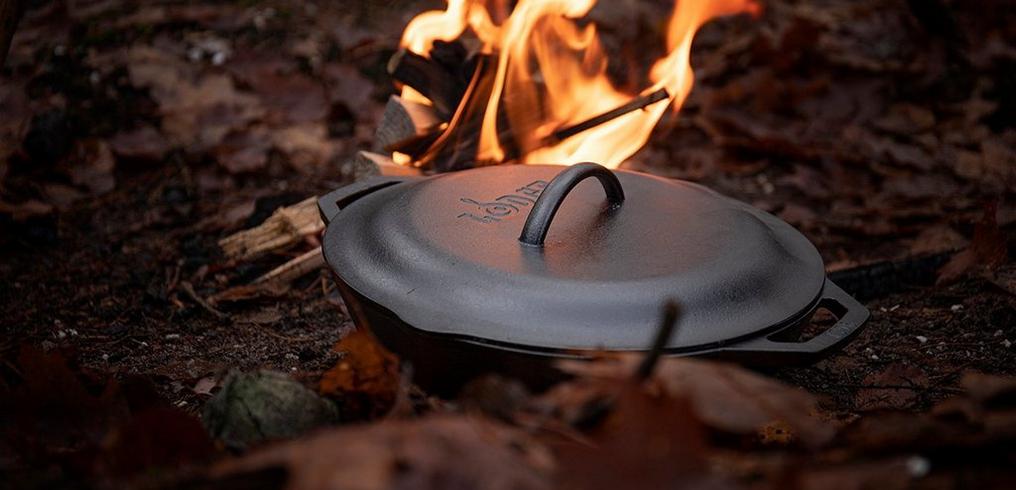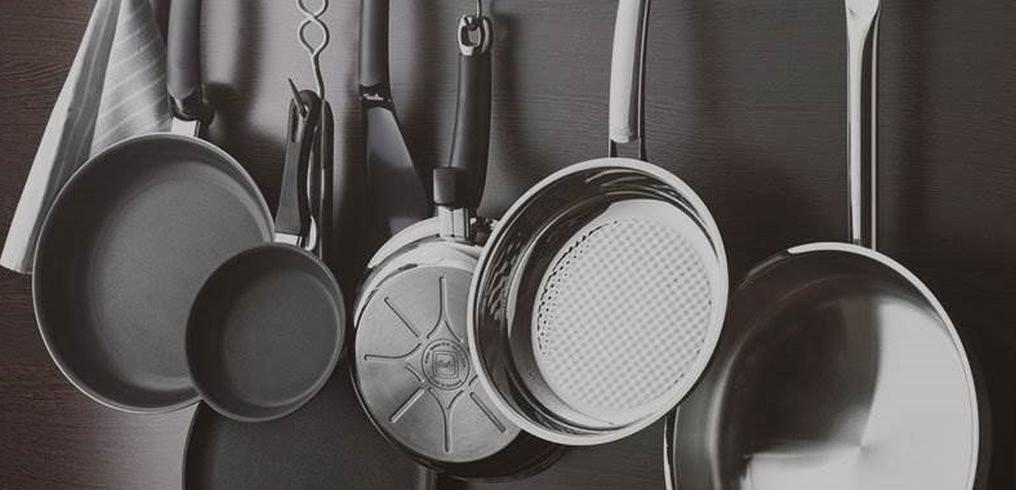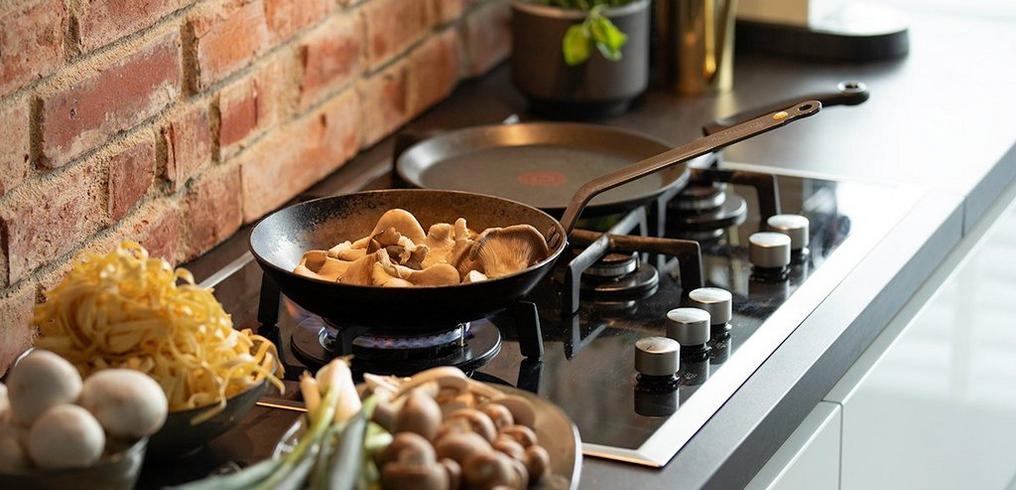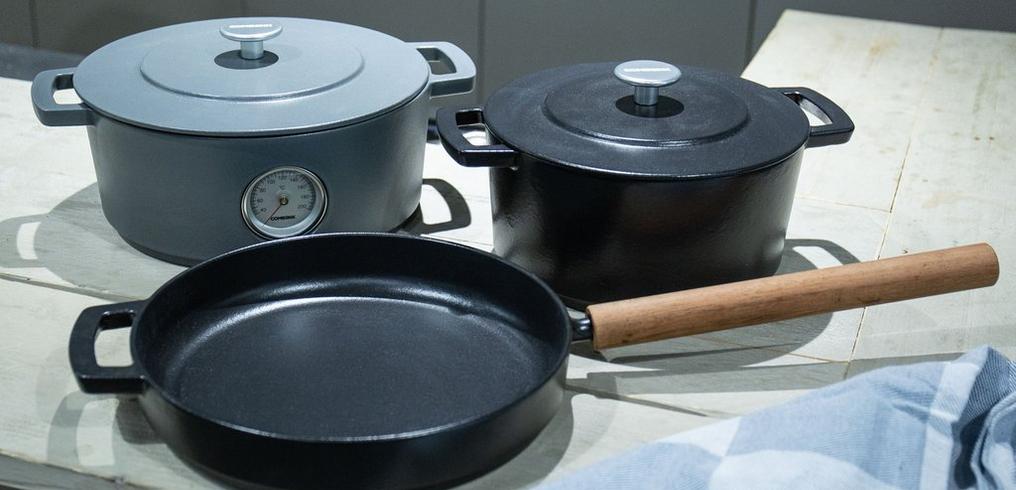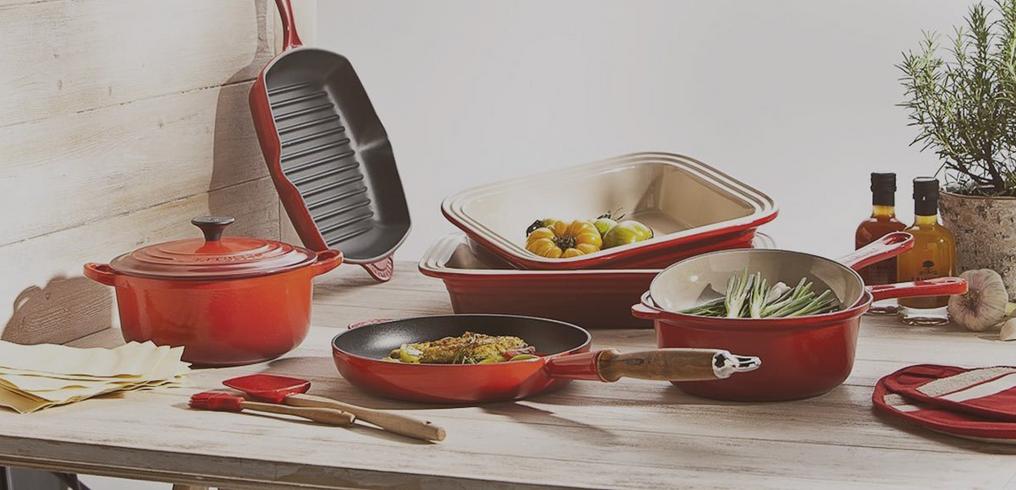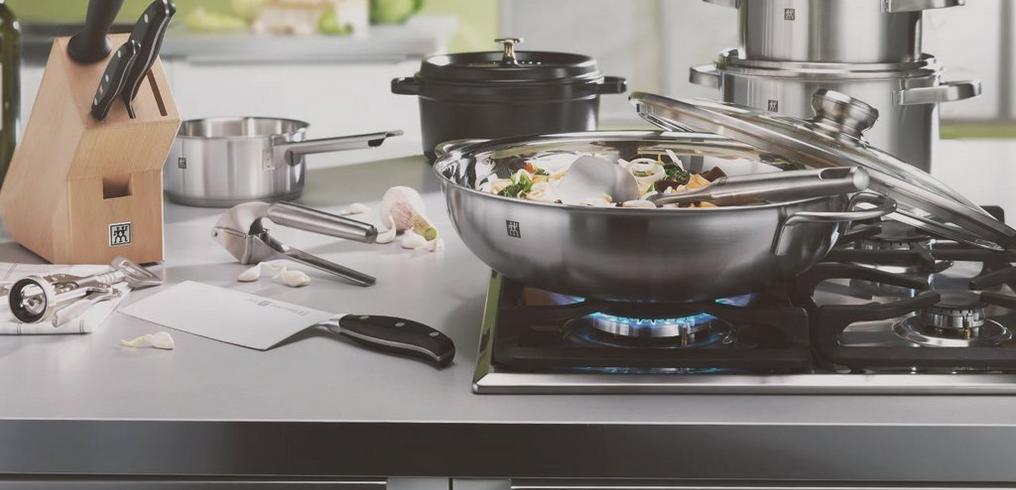Staub vs Le Creuset vs Combekk
The best cast-iron casserole does not exist, but there are some interesting differences between the various brands. One by one we compare the differences between Le Creuset, Staub and Combekk.
A lid for every pot
The most distinctive difference can be found in the lid. The Staub casseroles all have a special lid. A flat contoured lid with a raised edge and little spikes on the inside that are evenly distributed over the surface of the lid. Because they are so evenly distributed over the surface of the lid the moisture will also evenly fall back into the pan, instead of dripping down via the rim of the pan. As such your dish will taste better. Furthermore, if you want to speed up the condensation process you can put ice cubes on the flat lid.. Because of its weight the lid perfectly seals off the pan.
However, Staub is not the only one to work with this type of lid. On the contrary, this type of lid was invented by Le Creuset. In 1932 they developed this lid with this special cooking method, also called doufeu. Today Le Creuset still produces casseroles with this type of lid. However, Le Creuset’s standard lid is not a doufeu lid but a concave lid with a central point that collects all the moisture. As a result the pan responds differently because the condensation falls back down via the middle and edges of the pan. In addition, the lid is less heavy which makes the pan relatively light in weight.
The lid on a Combekk pan could be considered to be a happy medium. It is not a lid similar to those made by Staub, but they do have those similar spikes. However, on the outside the pan is missing that raised edge. The lid is less heavy than lids made by Staub, but heavier than those made by Le Creuset.
Stay true to the colours
Combekk, Le Creuset and Staub all make beautiful cast-iron cookware. Pans that feel at home on the stove, inside the oven or on the dining room table to use as a serving dish. They do all have their own distinctive character. Combekk pans have a matted enamel coating on the surface and look tough and industrial.
This is in contrast to Staub. These pans have deep, shiny colours through the majolica-email technique they use. Le Creuset also makes pans with a lovely glow over them in many different colours. From traditional red to fresh and modern pink! Although the colour of the pan has no impact on preparing the dish, a beautifully looking dish gives so much more flavour!
Love for the inner beauty
These pans are very different on the inside as well. The inside of a Le Creuset pan is cream-coloured which contrasts with the products inside the pan.
The inside of Staub-pans are matted black. The black colour camouflages scratches and other wear and tear better. Combekk pans are the same colour on the outside as on the inside. The matted gray pans of Combekk give you a better look at the products you are preparing.
To measure is to know
Do you follow recipes to the letter? Weigh everything three times before you throw it in the pan? The integrated thermometer in Combekk pans is ideal for you! You never have to lift the lid to take the temperature of your dish. As a result you’ll keep those nice juices inside the pan at all times!
Conclusion
Whether you want elegant, solid or provocative, these brands will help you out! Quality-wise these are the best around. Cooking in a cast-iron pan is a true delight. Le Creuset, Staub and Combekk all have different styles, but at the core they are the same. Cast-iron and enamel top quality! This has been a winning recipe for decades and this will remain so for a long time. These rock-solid pans will last for generations. Some first edition Le Creuset pans are still being used to this day!
?%24center=center&%24poi=poi&%24product-image%24=&fmt=auto&poi=%7B%24this.metadata.pointOfInterest.x%7D%2C%7B%24this.metadata.pointOfInterest.y%7D%2C%7B%24this.metadata.pointOfInterest.w%7D%2C%7B%24this.metadata.pointOfInterest.h%7D&scaleFit=%7B%28%24this.metadata.pointOfInterest%29%3F%24poi%3A%24center%7D&sm=c&w=762)
?%24center=center&%24poi=poi&%24product-image%24=&fmt=auto&poi=%7B%24this.metadata.pointOfInterest.x%7D%2C%7B%24this.metadata.pointOfInterest.y%7D%2C%7B%24this.metadata.pointOfInterest.w%7D%2C%7B%24this.metadata.pointOfInterest.h%7D&scaleFit=%7B%28%24this.metadata.pointOfInterest%29%3F%24poi%3A%24center%7D&sm=c&w=762)
